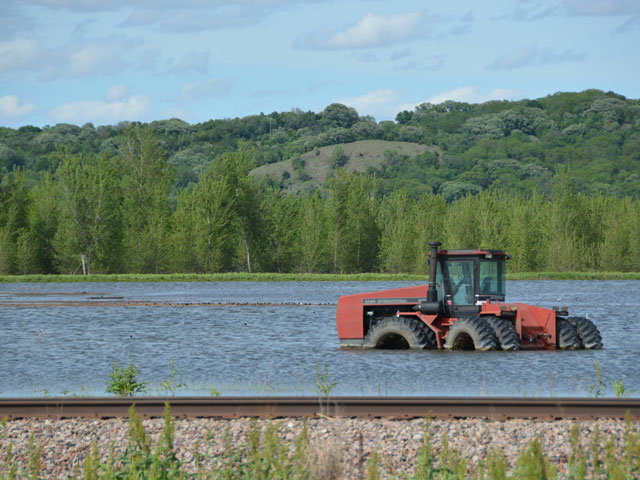Prevented-Planting Changes
RMA Finalizes Policy Changes for 2021 Spring Crops, Expanding '1-in-4' Rule Nationally
OMAHA (DTN) -- USDA's Risk Management Agency has finalized a crop insurance change for spring-planted crops that will require farms nationally to meet the "1-in-4" planting requirement for acres to be eligible for prevented-planting coverage.
The change was among multiple policy tweaks that will go into effect for 2021 spring crops. The Risk Management Agency (RMA) is following up on several changes to crop insurance that had been proposed through a task force which met following the 2019 crop year, which saw nearly 20 million acres with prevented-planting claims. RMA had initially announced the rule differences in August, but the changes were finalized in a Federal Register posting on Nov. 30.
"These improvements are the result of feedback from producer groups and other stakeholders," said RMA Administrator Martin Barbre. "These changes will improve prevented-planting coverage and the beginning and veteran farmer and rancher program for years to come."
The "1-in-4" rule began in the Prairie Pothole region starting in the 2012 crop year. Under the provision, crop acreage must have been planted and harvested at least once in the last four years to be eligible for prevented-planting coverage. For spring crops, the rule will go into effect nationally for the 2021 crop year. The provision applies to physical acreage. The acreage must have been planted and harvested at least once from 2017 through 2020 crop years.
P[L1] D[0x0] M[300x250] OOP[F] ADUNIT[] T[]
If acreage fails to meet the "1-in-4" rule, the ground must be planted, insured and harvested, or have an adjusted claim for loss after planting for two consecutive years before becoming eligible again for prevented-planting coverage.
For the 2020 crop year, USDA's Farm Service Agency reports 10.2 million acres prevented from planting, which included 3 million acres in North Dakota and 1.7 million acres in South Dakota, both of which are at the heart of the Prairie Pothole region. Outside of that region, Arkansas also had 1 million acres of prevented-planting acres. Louisiana, Mississippi, Missouri and Texas each reported at least 395,000 acres of prevented-planting acres as well.
A separate rule change will solve a complication that came up for a small number of producers in 2019 regarding the way prevented-planting acres are counted when uninsured crops are planted. Effectively, prevented-planting acres would no longer be subtracted on a field when an insured crop fails in part of the field and is replanted with a different uninsured crop.
In a nuance to deal with crop rotation for a farmer in a new county, USDA will allow the use of intended acreage reports to establish eligible prevented-planting acres for the first two years, instead of only the first year, for farmers who are new to a county where they never produced a crop.
In another rule change, farmers will be able to receive a prevented-planting payment on different crops in a field if they can show they had intended to plant those acres to a different crop. For instance, a farmer could claim prevented acres for corn instead of soybeans, even though part of the field is planted to soybeans. To qualify, the unplanted section of the field must be at least 20 acres or 20% of the total acres in the field. A farmer would also have to provide proof to back the claim, such as seed receipts and fertilizer inputs to show the field was supposed to be planted to a certain crop.
Another insurance change will allow a beginning or veteran farmer with farming experience to use the Actual Production History (APH) yield on acreage of the previous producer on the ground. To receive that APH profile, the beginning or veteran farmer or rancher has to show they were previously involved in decision-making or physical work on the crop or livestock of any farm. This rule expands an APH profile that only gave the history to a beginning or veteran farmer who had been previously worked on that specific acreage.
Chris Clayton can be reached at Chris.Clayton@dtn.com
Follow him on Twitter @ChrisClaytonDTN
(c) Copyright 2020 DTN, LLC. All rights reserved.




